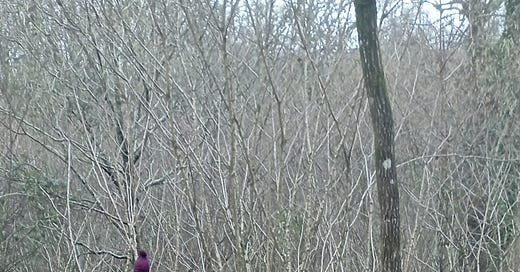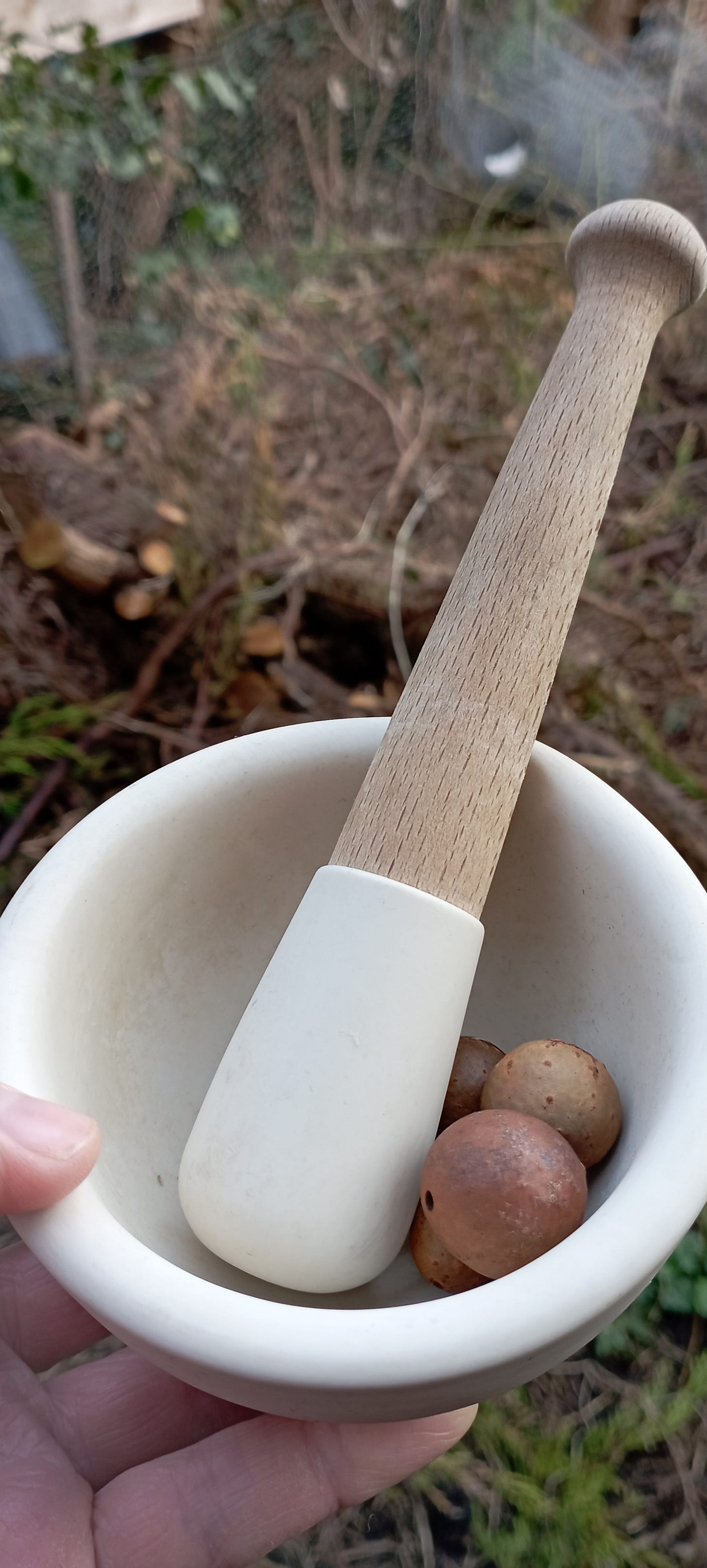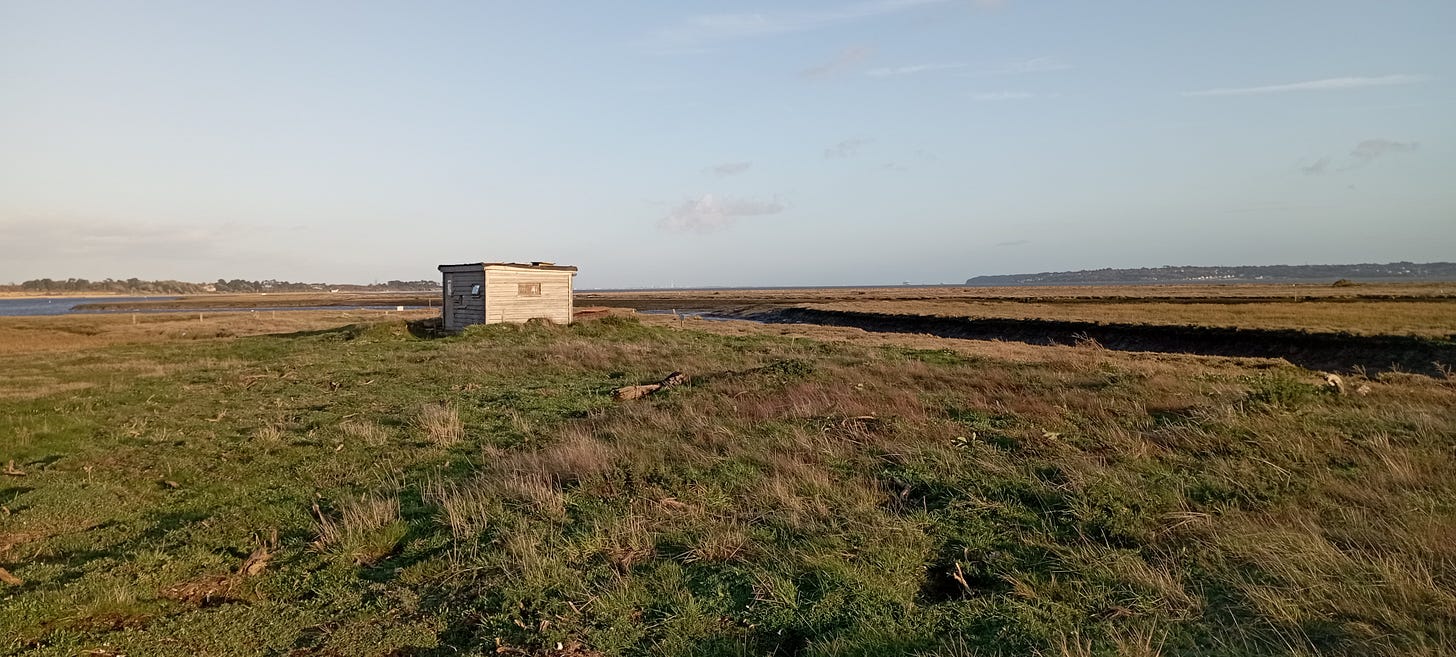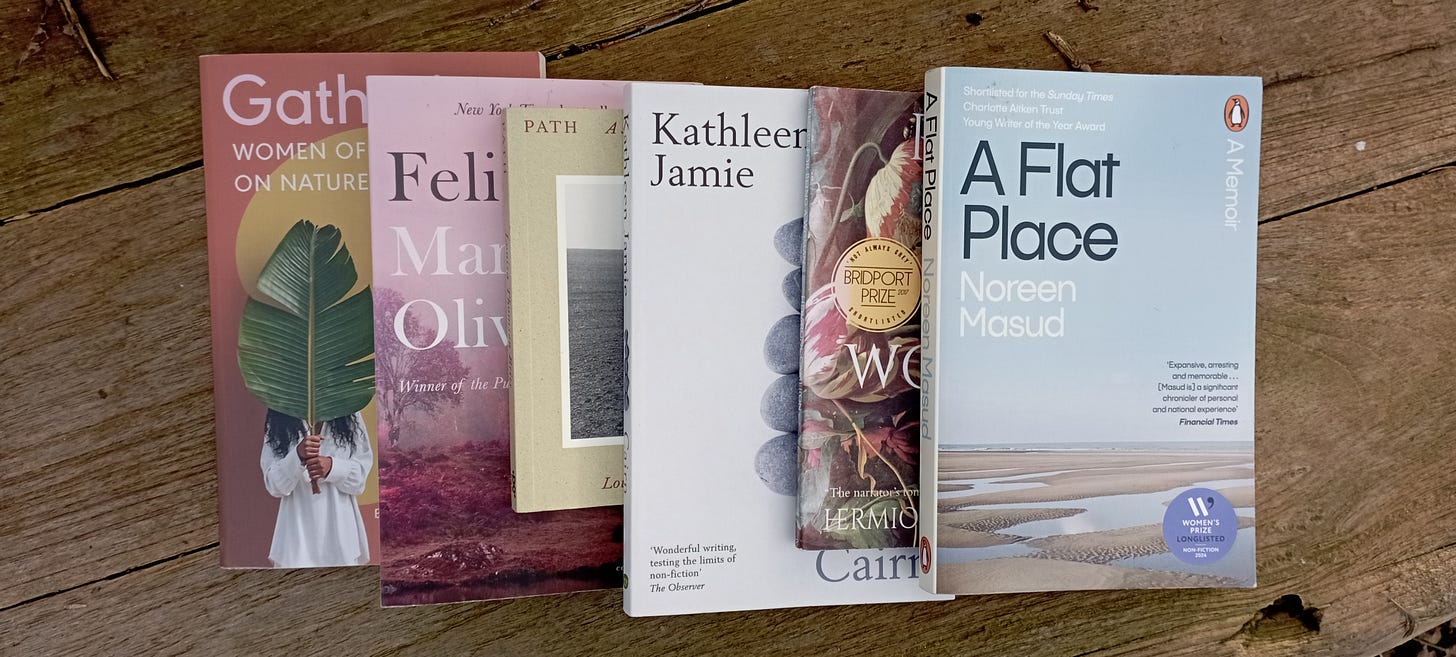This residency is hosted by the Countryside Education Trust in Beaulieu, supported by ArtfulScribe and funded by the New Forest National Park Authority’s Sustainable Communities Fund.
Hazel Coppicing this week - harvesting for materials, but also sustaining life in the coup.
In my last blog, I thought about how my brain really likes searching and collecting - for ideas, for things to look at, for stories - and for words. There’s something of the scavenger about how I work - and how lots of writers work.
A Residency - especially one in a patchwork landscape like the New Forest - is a brilliant opportunity for a writer to forage. The Countryside Education Trust, which operates across ancient woodland, working farm and coast, enables this even more. I’ve been able to scurry around the woods, join in with mucking out the barn and moving animals, and go down to the coast winding through narrow, hedged lanes in a minibus. My notebook has very quickly filled up with scraps from all sorts of places.
I talked about this with Anna, the Manager at CET, this week. Originally, we thought it would be good to focus the poetry aspect of the residency on the Ancient Woodland - especially the characterful & veteran trees in Hertford Wood. But I’d noticed that my notebook was brimming - not only with writing about the forest, but with writing about sheep-fleece and farm hedgerows and oak galls- about tupping season and pony turnout - about insects on the farm in November - and falling down rabbit holes at Needs Ore Point by the Solent.
Oak Galls from oak in the farm hedge, to become ink
Needs Ore Point, where Terns will return
What was especially interesting is that these things weren’t separate from the woodland - they were all part of the landscape that surrounded it, that fed it - and that gave it context. It might be that children hear about pannage on the farm, and then find an acorn in the woods. It might be that you catch sight of a raven on the farm, and again from the field on the woodland margin. Or you follow the stream through the woods, down past the ponds - and down to the Beaulieu River. The staff at CET inhabit this landscape and put together a story for visitors that links together the landscape - so it seems natural that a writer would too.
So, I’ve been foraging in all these real-life places, picking up images and sounds and scents to go in my notebook. Eventually, after some stewing, they’ll be cooked up into poetry.
Here are some of the scraps (I was tempted to take photos rather than type them up -but lots are hard to decipher):
The slopes shift in the mist,
A patchwork clasped
By gorse and bracken stems,
And the whir of the nightjar,
The stitch that hems the heath.
It smells like bedstraw and cross-leafed heather.
It smells like adders-breath and the sweat of the cattle
I prefer the hand saw –
Sharp, short as my forearm
That lets me feel the wood softer than bone,
Like a blade through fibres of flesh that peel as they fall
One crate of Victoria Plums, blush and yellow and green
Sun so bright that the shadows of the leafless branches are like veins on the short grass, grazed down by South Down sheep (woolly heads bobbing or pressed through mesh fence)
The press of canvas and cloth against oily fleece
Stuffed into a sack piled with a thud
The stretch of skin to cut close and fold a leg, fold a ewe
Once I’ve got the scraps together, I start turning them into something that looks a bit more like poetry. To do this, I embark on another kind of foraging mission - among other writing. This is where I’ll pick up scraps of rhythm, of form, of voice or subject matter that I like. While I’ve written poetry before - this is the first time I’ve worked towards a collection - so I’m also thinking about thinks like presentation, arrangement, order.
Here are some of the books I’ve been foraging among this week:
Gathering, An Anthology of Nature Writing by Women of Colour ed. Durre Shahwar and Nasia Sarwar-Skuse
Felicity, Mary Oliver
Cairn, Kathleen Jamie
Recipe for being a Woman, Hermione Cameron
A Flat Place, Noreen Masud
It’s been a while since I’ve really examined poems academically - so I might even stretch myself by trying to stick to some kind of form (a Sonnet for a Sycamore, perhaps) - and find an opportunity to share (perhaps ‘Writing as Spiritual Practice’ that ArtfulScribe run in collaboration with October Books) - for feedback on form rather than content.
At this stage, I’m still foraging, so I’ll report back on how these poems begin to take shape.
Afternotes:
A Flat Place by Noreen Masud was one of the first books I was able to read in full after a long period of burnout that largely stopped me reading for enjoyment - or reading in a way that didn’t require wading through the sludge to get through each sentence. The subject matter - flat landscapes, trauma, self-reflection - is compelling. The writing walks a perfectly balanced tightrope through a landscape that’s literary and factual and frank, but also introspective in a way that shows how humans can in one moment see the world around them so keenly and sharply - and one minute be swept up in a fog that makes us question what reality even is. But most of all - I think the prose itself is sharp and clear, reeling me in and pulling me along through the different landscapes. I’m still trying to put my finger on what’s so good about this prose - and why this sits so far above most autobiographical nature writing. It’s academic and not cloying. It’s honest but never self-indulgent.
Also - For those who are interested in the practicalities of a residency, my time is divided roughly into six main elements:
Writing in situ (taking my notebook to the woods; to the farm)
Joining in with practical tasks (in the woodland or on the farm, for example hedge-cutting, pond-dipping) which inform the above writing
Running workshops for groups to connect them with landscapes
Working on smaller commissions & project work for CET e.g. Creating activities for a Tree Trail for Primary Children , Editing the script of an Audio Trail
Consolidating and editing my own writing to publish into a pamphlet at the end of the residency
Admin and other bits and pieces (e.g. risk assessing workshops, working with teachers in schools)







